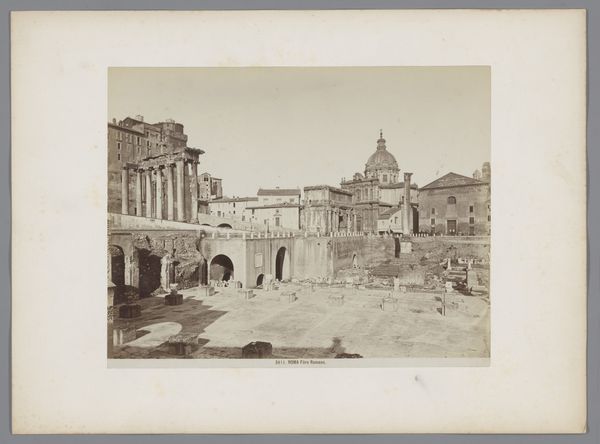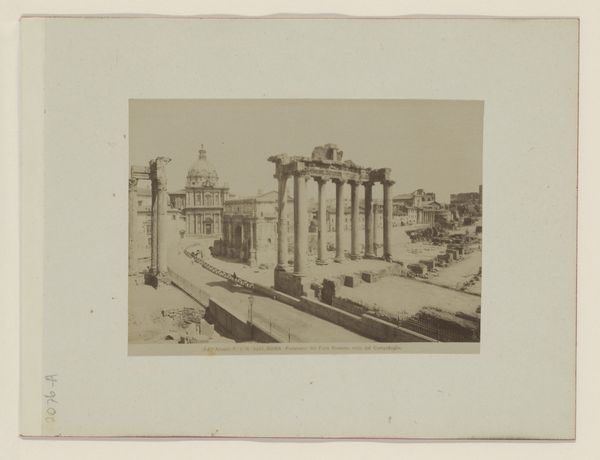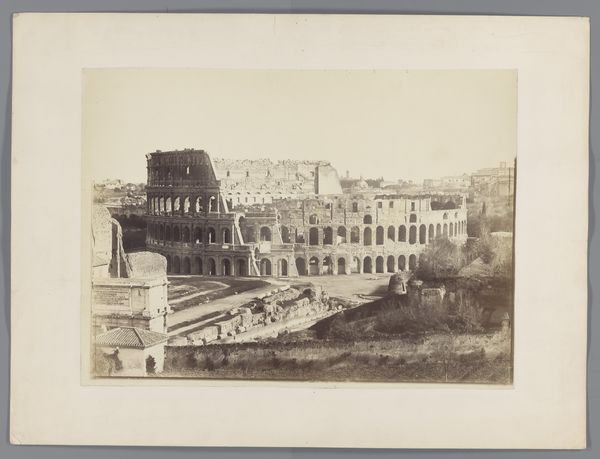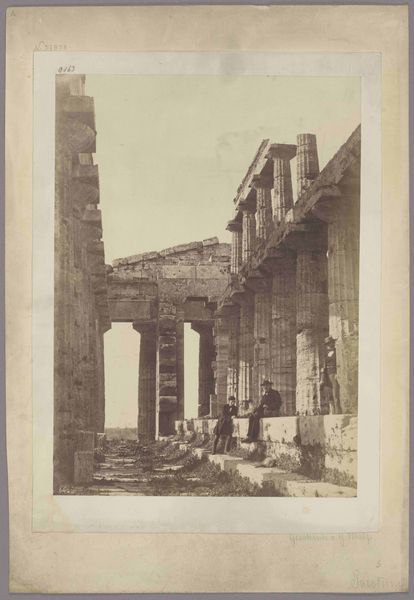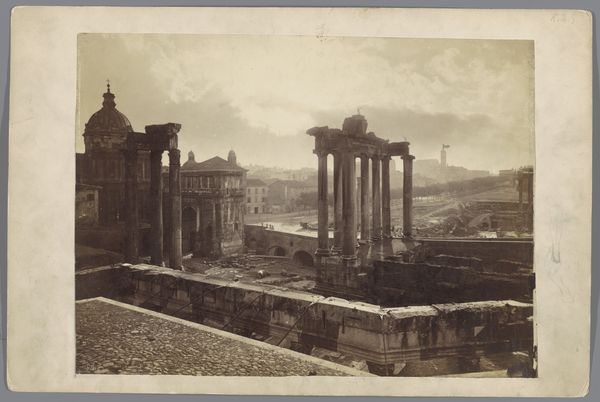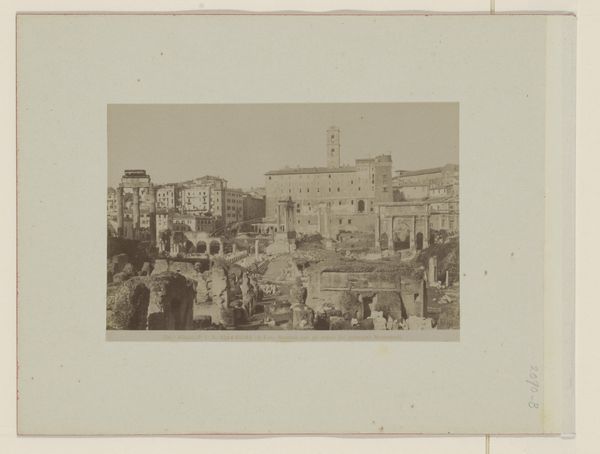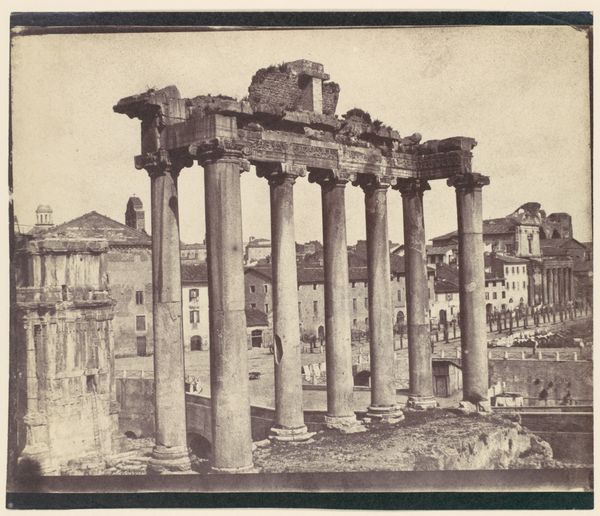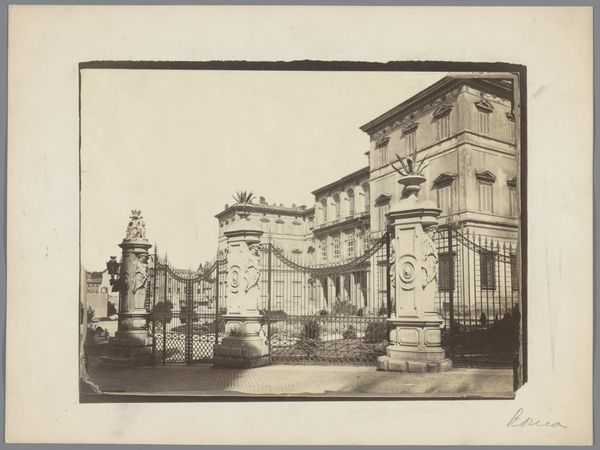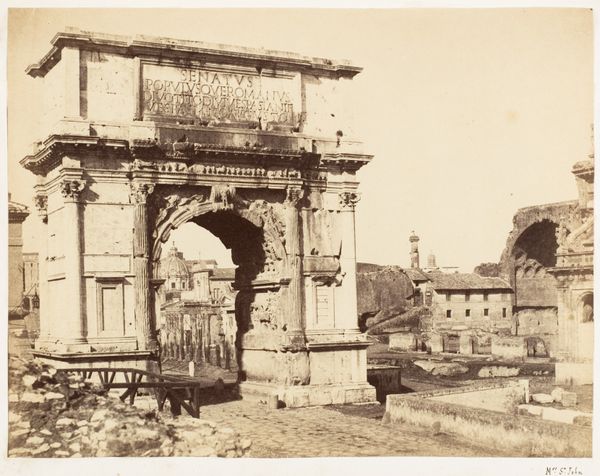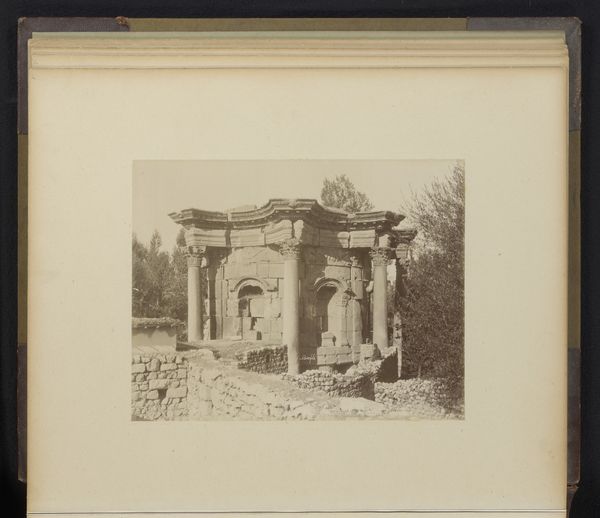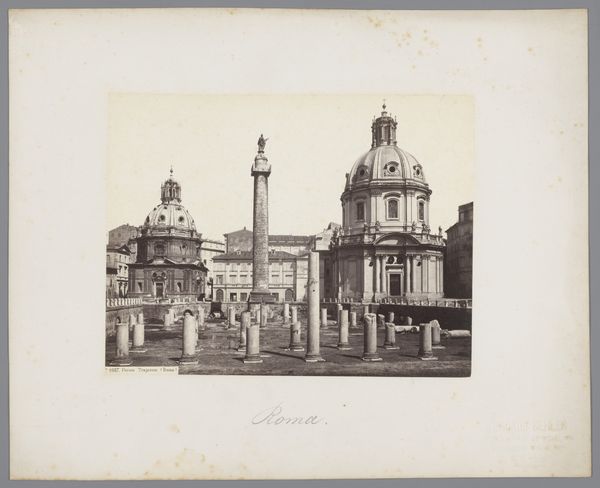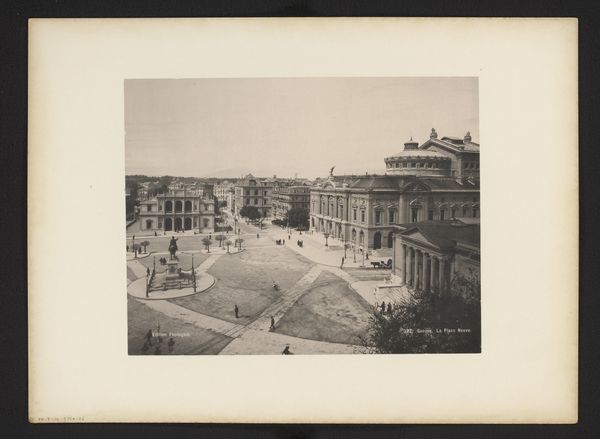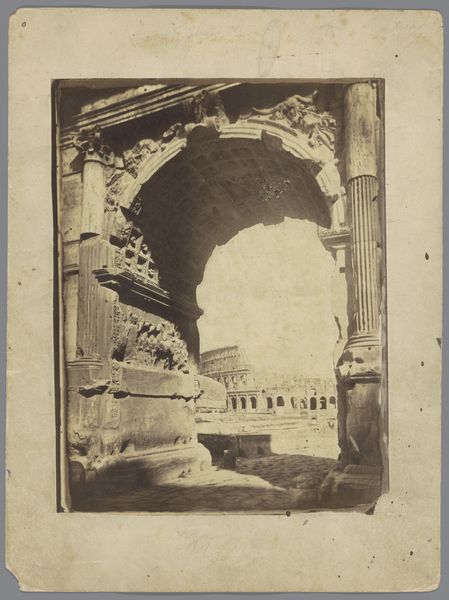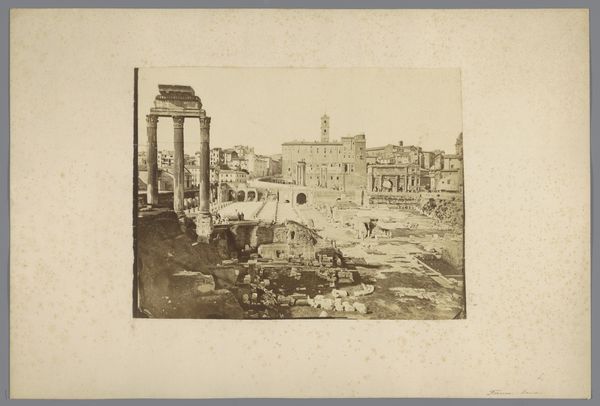
Ruïne van de tempel van Vespasianus en de triomfboog van Septimus Severus te Rome, Italië 1867 - 1874
0:00
0:00
photography, gelatin-silver-print
#
landscape
#
photography
#
romanesque
#
ancient-mediterranean
#
gelatin-silver-print
#
cityscape
#
realism
Dimensions: height 322 mm, width 379 mm
Copyright: Rijks Museum: Open Domain
Curator: Here we have "Ruïne van de tempel van Vespasianus en de triomfboog van Septimus Severus te Rome, Italië," a gelatin-silver print captured between 1867 and 1874 by Sommer & Behles. Editor: It’s arresting. The ruins dominate the scene. The effect is almost ghostly, the lack of vibrant color lending to this feeling of time having worn everything down. Curator: Exactly. We see this landscape captured through the lens of realism. Consider the laborious wet collodion process that was the base for such prints. Each print reflects hours in the darkroom, manipulating chemicals and light to capture the intricacies of these Roman structures. It brings forward the artist's labor in creating this piece. Editor: Absolutely, and look at the subject! These structures served as backdrops for centuries of political maneuvering, social upheaval, and imperial displays of power. These Roman ruins aren't just stone; they are containers of identity, power, and resistance. What do they symbolize now in post-unified Italy through the eyes of Sommer & Behles? Curator: I see that the photographic method of gelatin silver print is critical. This process made image reproduction easier than earlier techniques. We are presented with a reproducible record, something that could disseminate views of Roman historical greatness across Europe. Editor: Precisely. Who got to see this image and interpret what it meant? The image itself reinforces a particular social gaze. These romanticized ruins of the empire were particularly consumed by Europeans, feeding into colonial projects in other places. Curator: I agree, examining the historical conditions that enabled its production provides more than just aesthetics but a social analysis through its making and later reproduction. Editor: A ghostly echo indeed—it shows us the complex, interwoven narratives of time, labor, and the enduring power of visual representation. Curator: Yes, a somber and compelling view of how materials and social reproduction shape the views of the ancient past.
Comments
No comments
Be the first to comment and join the conversation on the ultimate creative platform.
